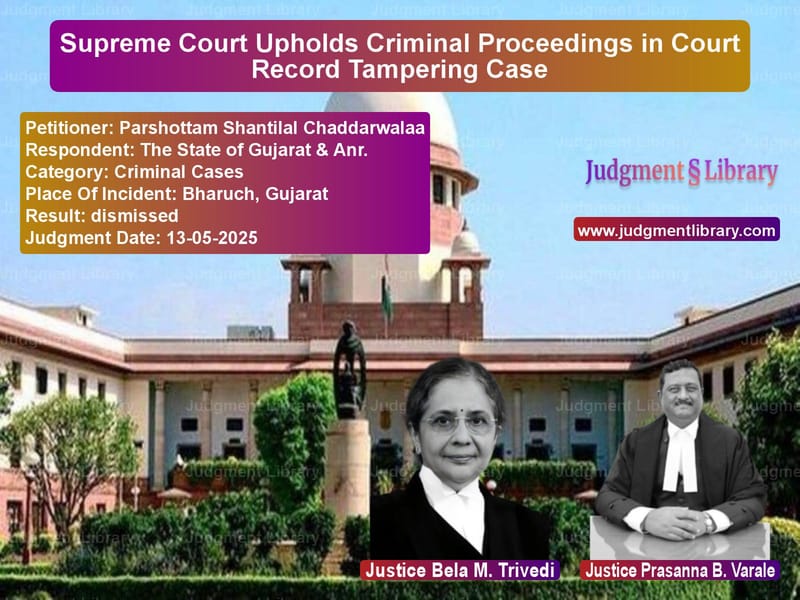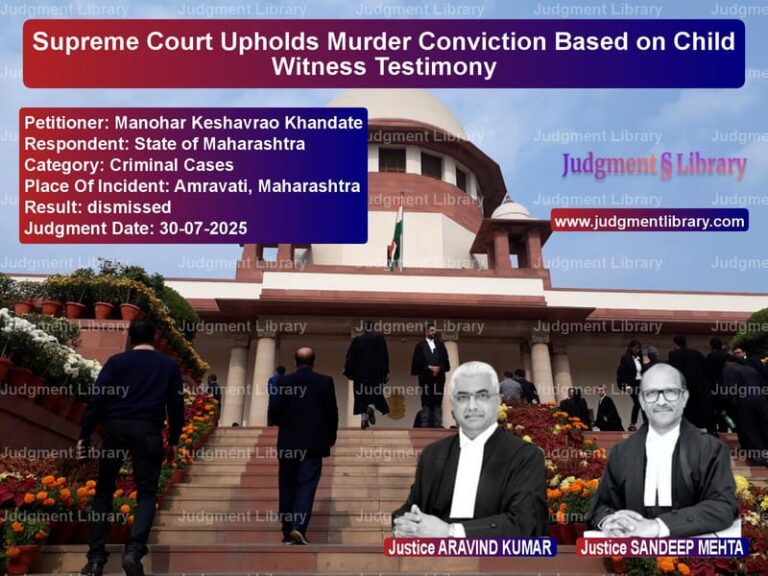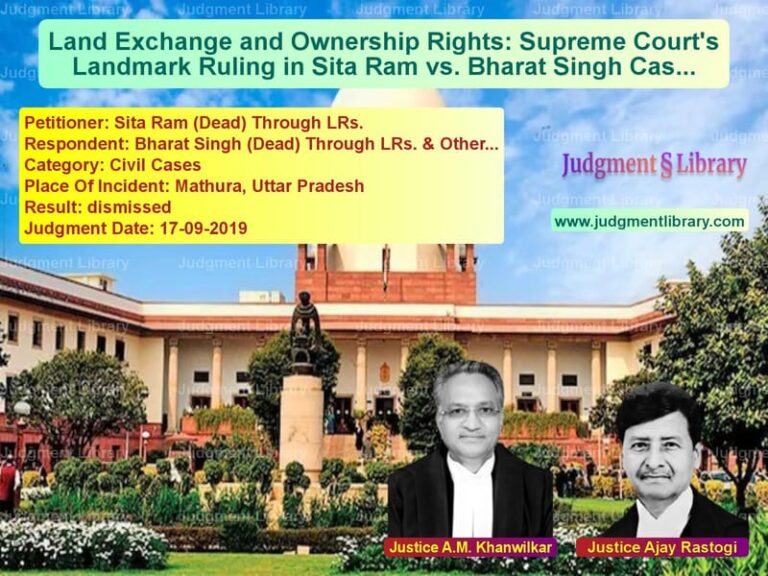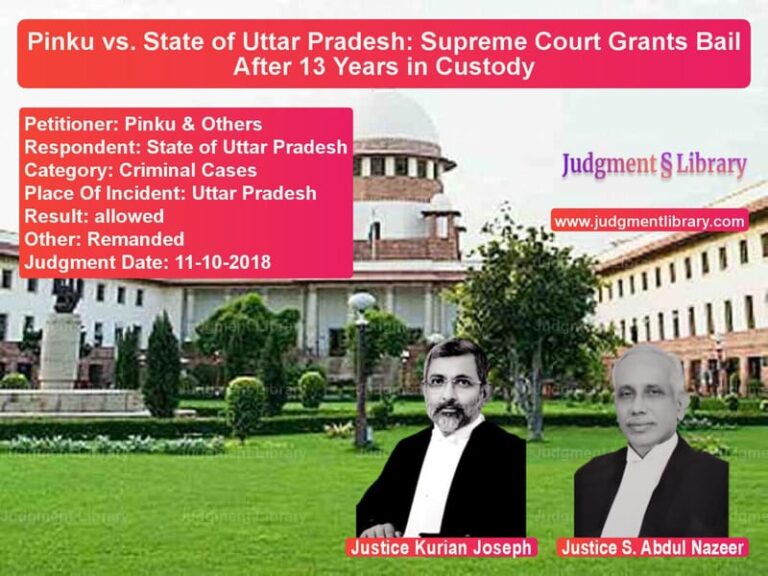Supreme Court Upholds Criminal Proceedings in Court Record Tampering Case
In a significant ruling that clarifies the scope of legal protection for court records, the Supreme Court of India has dismissed an appeal challenging criminal proceedings in a case involving alleged tampering with court documents. The case involved Parshottam Shantilal Chaddarwalaa, who was accused of conspiring with court employees to fabricate court records and file fraudulent execution proceedings after a civil suit had been withdrawn.
The legal saga began in 2003 when Chaddarwalaa filed Special Civil Suit No.79 of 2003 as power of attorney holder for partners of Narmada Finvest partnership firm. The suit sought recovery of Rs.5,45,052/- from Kamlesh Kantilal Patel. However, the parties reached an out-of-court settlement on March 28, 2003, where the defendant’s brother, Laksheshbhai Patel, agreed to pay Rs.2,25,000/- through 15 cheques of Rs.15,000/- each. Based on this settlement, Chaddarwalaa filed a withdrawal pursis on April 2, 2003, seeking unconditional withdrawal of the suit, which was granted by the court.
The controversy erupted when some of the settlement cheques were dishonored, and Chaddarwalaa allegedly conspired with court officials to tamper with the court records. The prosecution alleged that the original withdrawal pursis was removed from the court record and replaced with a fabricated settlement pursis. A bogus decree was created despite the Rojkam (daily order sheet) clearly indicating that no decree should be drawn since the suit was withdrawn. The entire Rojkam was allegedly retyped, and forged rubber stamps and signatures were used to create the fabricated documents.
Based on these allegations, an FIR was lodged on July 28, 2005, by the Incharge Registrar of District Court, Bharuch, alleging offences under Sections 192, 193, 196, 204, 209, 406, 420, 463, 464, 465, 466, 467, 468, 469, 471, 473, 474, 499, 500, 120-B and 114 of IPC. After investigation, a chargesheet was filed, and criminal proceedings commenced before the Chief Judicial Magistrate, Bharuch.
The appellant’s counsel mounted a vigorous defense centered on Section 195 of the Code of Criminal Procedure. “The High Court failed to appreciate that the alleged offence in question having been committed in relation to court proceedings, would fall within the ambit of Section 195 of the CrPC, hence, cognizance of the same could not have been taken except on a complaint in writing signed by the Learned Presiding Officer,” argued the counsel. He emphasized that “a proceeding of court does not mean only a live proceeding, even concluded proceedings falls within the expression ‘proceeding’ and this would also include the original record of the case and merely because the suit has been disposed of, the record of the case will not cease to be a record of a judicial proceeding.”
The appellant’s legal team made several technical arguments, contending that “Section 195(1)(b)(ii) CrPC which applies to offences described in Sections 463, 471, 475 or 476 is clearly attracted even if the factual averments made in the FIR and the Chargesheet are assumed to be true as the allegation is with respect to an offence committed in respect of a document produced or given in evidence in a proceeding in any court.” They also argued that “the inquiry conducted by the Vigilance Branch of the High Court cannot be said to be an inquiry in view of Section 195 of the CrPC as an inquiry/investigation/preliminary inquiry conducted by the Vigilance Branch cannot be termed as an inquiry/preliminary inquiry by a Court.”
The respondents countered these arguments effectively. Their counsel submitted that “settled jurisprudence supports the view that an FIR, when initiated by an authorized official on the direction of the High Court is maintainable even if certain technicalities are challenged and is in compliance of section 340(3) of CrPC.” They made a crucial distinction that “‘concluded proceedings’ are those that have reached a final decision, whereas withdrawn proceedings, having never been decided on the merits, do not fall within this category.”
The respondents emphasized the legislative intent behind Section 195, stating that “the amended provision of Section 195 gives a clear indication qua the legislative intent pertaining to the bar imposed by the provision. The Section was enacted to curtail the frivolous complaints made by the private individuals.” They also pointed out that “in a case wherein the Vigilance inquiry was conducted by the High Court and it was found that the offense under the relevant sections have been committed, thus, directing the District Court to file the complaint for the prosecution of the Petitioner, it becomes patently clear that the compliance of Section 340(3) of Cr. P.C. was observed while filing an FIR in the matter as the said direction were from the Constitutional Court itself.”
The Supreme Court bench comprising Justices Bela M. Trivedi and Prasanna B. Varale delivered a comprehensive judgment analyzing the factual matrix and legal principles. The Court noted that “the proceedings initiated by way of a suit concluded on a pursis filed by the petitioner himself on 2nd April, 2003.” The Court observed that “the petitioner who was carrying an ill intention and with the oblique motive by hatching conspiracy with some court employees started harassing one of the defendant Laksheshbhai Patel by demand of money.”
The Court made crucial factual findings that “all these facts referred to above, clearly indicate that the proceedings initiated by filing of Civil Suit were concluded on submitted the withdrawal pursis. All the subsequent acts that is preparation of bogus documents and replacing these bogus documents to the court record were the acts post conclusion of the proceedings.” The Court emphasized that “the record was not in the custody of the court before whom the civil suit was filed” since it had been transferred to the record room.
The Supreme Court relied heavily on its earlier precedent in M.R. Ajayan v. State of Kerala & Ors., extracting several important principles. The Court noted that “broadly, the scheme of the Section requires that the offence should be such which has a direct bearing on the discharge of lawful duties of a public servant or has a direct correlation with the proceedings in a Court of justice, affecting the administration of justice.” The Court further clarified that “the provision only creates a bar against taking cognizance of an offence in certain specified situations except upon complaint by the Court” and that “to attract the bar under Section 195(1)(b), the offence should have been committed when the document was in ‘custodia legis’ or in the custody of the Court concerned.”
The Court made a significant observation about the purpose behind Section 195, stating that “it is not in dispute that the object of imposition of the bar under Section 195 CrPC is to avoid the frivolous litigation and not to provide shelter or tool to a mischief player or an offender.” This statement underscores the Court’s view that technical legal provisions should not be used to shield individuals who engage in deliberate manipulation of court records.
The Supreme Court affirmed the Gujarat High Court’s reasoning which had drawn a distinction between offences committed during live proceedings and those committed after proceedings concluded. The High Court had observed that “once a proceeding is withdrawn, there would be no proceeding before the Court as the plaintiff has taken back the proceeding. The position would be akin to no proceeding having been filed except for the purpose of barring a subsequent suit on the same cause of action.” The High Court had further noted that “by merely maintaining the documents in the record room, it cannot be said that the documents are in custodia legis, as envisaged under Section 195 of the Code.”
The Supreme Court concluded that “in the factual matrix of the present case, Section 195 CrPC is not at all applicable” and that “the judgment and order passed by the High Court, is just and proper. The High court by considering the facts, in its proper perspective, arrived at a just conclusion.” Accordingly, the Court dismissed the appeal, allowing the criminal proceedings to continue.
This judgment serves as an important precedent clarifying that tampering with court records after proceedings have concluded does not enjoy the protection of Section 195 CrPC. The ruling reinforces that the legal system will not allow technical procedural provisions to be used as shields for serious offences involving manipulation of court documents. The decision also highlights the courts’ commitment to maintaining the integrity of court records and ensuring that those who attempt to subvert the judicial process through document tampering face appropriate legal consequences.
The case demonstrates the delicate balance courts must strike between protecting genuine court proceedings from frivolous litigation through provisions like Section 195 CrPC, while simultaneously ensuring that serious offences involving court record manipulation do not escape prosecution due to technicalities. The Supreme Court’s ruling makes it clear that the protection offered by Section 195 is not absolute and cannot be invoked when the alleged offences occur after judicial proceedings have conclusively ended and documents are no longer in active court custody.
Petitioner Name: Parshottam Shantilal Chaddarwalaa.Respondent Name: The State of Gujarat & Anr..Judgment By: Justice Bela M. Trivedi, Justice Prasanna B. Varale.Place Of Incident: Bharuch, Gujarat.Judgment Date: 13-05-2025.Result: dismissed.
Don’t miss out on the full details! Download the complete judgment in PDF format below and gain valuable insights instantly!
Download Judgment: parshottam-shantilal-vs-the-state-of-gujarat-supreme-court-of-india-judgment-dated-13-05-2025.pdf
Directly Download Judgment: Directly download this Judgment
See all petitions in Fraud and Forgery
See all petitions in Contempt Of Court cases
See all petitions in Legal Malpractice
See all petitions in Criminal Conspiracy
See all petitions in Judgment by Bela M. Trivedi
See all petitions in Judgment by Prasanna Bhalachandra Varale
See all petitions in dismissed
See all petitions in supreme court of India judgments May 2025
See all petitions in 2025 judgments
See all posts in Criminal Cases Category
See all allowed petitions in Criminal Cases Category
See all Dismissed petitions in Criminal Cases Category
See all partially allowed petitions in Criminal Cases Category







